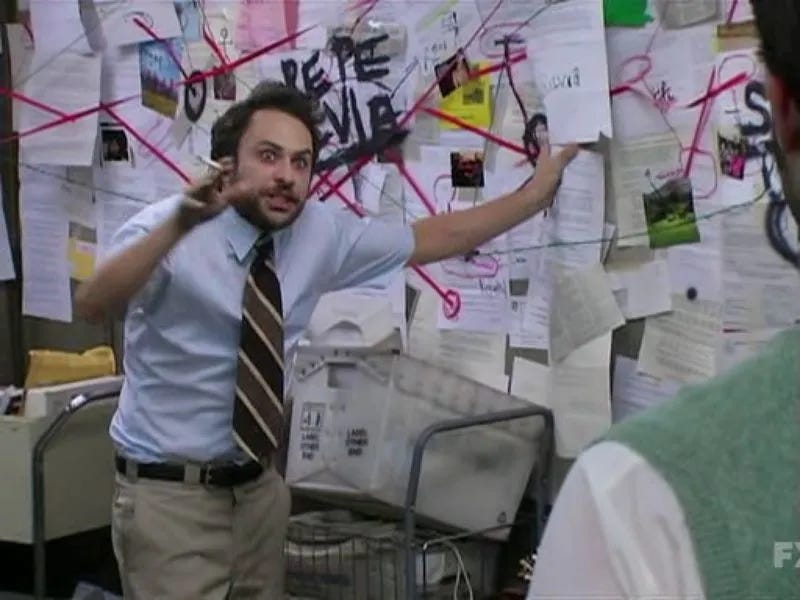thoughts and patterns
On "The Ways of Paradise" by Peter Cornell
Sometime in January, I read The Ways of Paradise by Peter Cornell. This is again a Fitzcarraldo Edition and, yes, if you couldn’t guess I did have a backlog of these to read. And, no, I’m not doing a good job of writing everyday.
The Ways of Paradise is only nominally by Peter Cornell. At least according to him. This work is a non-fiction assemblage. Allegedly, the only remaining fragments of a lost manuscript written by an unnamed, and now-deceased, Swedish researcher were left to Cornell to make sense of. (Literal death of the author, RIP Foucault, you would have loved this.) The notes have been numbered by Cornell but appear in the original order in which they are found. Though, if you spliced them up and shuffled them you wouldn’t really be able to tell the difference— or maybe you would. New meanings and interpretations might arise from such a re-arrangement, bringing to mind Stéphane Mallarmé’s, similarly lost work, The Book.
The notes presented touch on a wide range of topics such as the Surrealists interest in alchemy, the works of artists such as Robert Smithson, Paul Cezanne, and Jackson Pollock, Jerusalem as the centre of the world, Greek myth, and the philosophical meaning of shells. The book is a peripatetic journey through odd corners of the academe and is probably best enjoyed as a book you keep in your bag and pull out on occasion during rests on a long walk. The fact that walking and labyrinths are some of the only through lines, and the fact that these are footnotes, suggests as much.
I had an odd moment reading a few of the notes that talk about Tour Saint-Jacques. Apparently, the Tour Saint-Jacques was a common, but arbitrary, starting point for a pilgrimage and was where the alchemist Nicholas Flamel found a manuscript that led him to, allegedly, create silver and gold. It was also the subject of an anecdote, concerning a series of coincidences, André Breton tells in the afterword to Arcanum 17. This is, roughly, how the book proceeds. Jumping from idea to idea which coalesce around certain images or symbols.
That the Tour Saint-Jacques is one such touchpoint struck me as personally odd. Last fall, I was in Paris for four days; we took one of those days to simply wander around like the flaneurs of decades past. We were giving my friend Danielle, who had lived in Paris for a spell, a hard time by pointing at random statues or impressive buildings and saying, ‘What’s that?’ Which is what we did when we came upon Tour Saint-Jacques. She made something up and suggested we actually go in the little park to read the plaque. We did so, but were immediately confronted with one of those robots that’s essentially a screen on a pole. The screen was playing a live stream of a teen with a physical disability and as we looked around we realized we had walked into a, frankly touching, meet up. The whole encounter was surreal, in part due to our unpreparedness and to the contrast between the long-past history we had just read about and the robots around us. But more so, I was confronted with new ways of moving through the a city and what this technology allowed. Paris is chock full of historical monuments. The fact that we had a chance encounter there that challenged my idea of the privilege of walking aimlessly—as the figures in the book walked through this space years ago — was frankly spooky.
This book might sound intriguing, and it can be. It can also be quite boring; the work, and it’s payoff, are entirely up to the reader’s critical faculties. And, as this text is pulling at obscure threads, the missing context can feel prohibitive. An academic’s job generally entails making previously unseen connections or clarifying something poorly understood. These notes remind me of my own notes when writing a paper. Disparate chunks of information certainly cluster around specific ideas but some notes are there only because, while I was working, something caught my eye, like Barthes’ punctum in a photograph. It might mean that the note is relevant to the essay, or it might not. What I stubbornly found myself wanting, was the complete manuscript (which, really, may have never existed). I want to know what the researcher saw as the connective tissue between modern Pollock and mythic Daedalus.
Then again, the symbol of the spiral, which recurs many times in the book, was also how the legendary mathematician Alexander Grothendieck described his method of thinking: by moving around a problem to get to it’s centre rather than marching linearly through. Grothendieck also referred to this method as “Ariadne’s thread,” the guiding force that led Theseus out of the labyrinth. Ariadne’s thread, like the spiral, is a symbol. From the Greek sumbolon, the word denoted recognition between fragments of, say, a bone or a coin that fit together like a puzzle. The original 2FA, a messenger would keep one half as proof of their identity and the recipient would keep the other. All symbols bear witness to an absent part.
Then again, maybe Ariadne’s thread doesn’t help us get any closer to any profound truth. It’s called spiralling for a reason.
////////////////////////////////////////////////////////////////////////////////////////////////////////////////////////////////////////////////////////
As always, I hope you read the book! Let me know if you do.


